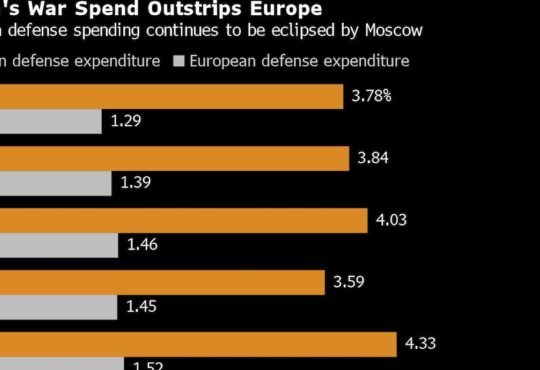
Incentive compensation
Typical structures
What are the prevalent types and structures of incentive compensation? Do they vary by level or type of organisation?
Short-term incentive compensation (STI) is typically paid in cash either upon achievement of pre-established performance targets or on a discretionary basis. In some cases, STI awards are settled partially in cash and partially in equity awards that are subject to additional vesting conditions, such as in cash and restricted stock, effectively providing short-term and long-term incentives within the same arrangement. It is not uncommon for companies to maintain different STI programmes for executives and non-executives and, in certain cases, additional or alternative plans are maintained for other groups of employees to incentivise them with respect to specific aspects of the business, such as sales.
Long-term incentive compensation (LTI) usually takes the form of equity awards or equity-based awards that are settled in stock although sometimes LTI is denominated and paid in cash. Common types of equity and equity-based awards include stock options, stock appreciation rights, restricted stock, restricted stock units and performance stock units. Settlement of LTI awards in cash is significantly more prevalent in private companies than in public companies owing to the lack of a market for the equity and the desire to have a limited number of equity holders. LTI awards are typically payable upon achievement of pre-established performance hurdles (performance-vested) over a performance period (typically at least three years) although there may be a service-based vesting requirement also (or in limited circumstances, in lieu of performance-based vesting). It is becoming increasingly common to require at least one year of service before any portion of an LTI award will vest (without regard to whether the award otherwise provides for performance-based vesting).
Equity-based awards for partnerships are typically granted in the form of profits interests, which have no value on grant and entitle the holder solely to future profits. Profits interests are usually vested based on service and satisfaction of performance hurdles and are often paid upon an ‘exit’ or ‘liquidity’ event for the partnership (such as a sale or dissolution). It is important to note that the holder of a profits interest is treated as a partner of the partnership and cannot also be treated as an employee of the partnership. As such, the individual’s participation in certain benefit plans of the partnership may be limited and compensation payable to the individual is reportable on a Form K-1 (rather than a Form W-2). For that reason, profits interests are often granted by a parent holding company while the individuals are employed by (and treated as employees of) a subsidiary operating company, thus limiting partnership compensation to the compensation attributable to the profits interests.
The foregoing information outlines the common types and structures applicable to incentive compensation. In the US, short- and long-term incentives are typically granted and, if applicable, performance targets are established, in early to middle of the first quarter of a calendar year. Although the effects of the covid-19 pandemic on executive compensation have largely stabilised, many companies learned from that experience that it is important to retain some flexibility to make adjustments with respect to STI and LTI awards for unforeseen circumstances and they have retained such flexibility in their programmes.
Restrictions
Are there limits generally on the amount or structure of incentive compensation? Are there limits that adversely affect the tax treatment of the compensation relative to the employer or the executive?
There are generally no legal limits on the amount or structure of incentive compensation. It is not uncommon, however, for an employer’s arrangements to include employer-based limitations on the amount that can be paid under an incentive plan. In addition, prior to the modifications to the Internal Revenue Code (Code) section 162(m) made by the Tax Cuts and Jobs Act of 2017 (Jobs Act), equity plans of public companies almost always included individual limits on the awards (both cash and equity) that could be granted to individuals in a specified period if the award was intended to satisfy the performance-based compensation exception of section 162(m). The Jobs Act effectively eliminated the performance-based compensation exception and thus those individual limits are no longer relevant for section 162(m) purposes. For a period after the changes to section 162(m) became effective, institutional investor advisers (such as Institutional Shareholders Services and Glass Lewis) have indicated that they expected such limitations to remain in the plan in order to reflect good corporate governance. In more recent reviews of plans, however, the elimination of the individual limits has not been required by, and had no impact on the recommendations of, the institutional investment advisers, as plans with no limits have received favourable recommendations. In certain cases, however, companies have voluntarily retained the limits because their shareholders expect to see the limitations and the company wants to show restraint with respect to executive compensation. This is particularly true in the case of companies that experience difficulties in getting shareholder approval for new plans or additions to the share pool available for equity based awards.
Beginning in approximately 2015, incentive compensation plans have, with much greater frequency, included limitations on director compensation. Most plans include these limits in the company’s shareholder-approved long-term incentive plan and include an annual limit for both cash and equity compensation. The impetus for including these limitations was a 2015 case (Calma v Templeton, often referred to as the ‘Citrix case’) which involved a shareholder suit brought against the company’s board of directors alleging that the directors had breached their fiduciary duty by awarding themselves compensation under a plan that had not been approved by the company’s shareholders. Although the plan in question did include a limit on participant compensation and was approved by the company’s stockholders, the court held that because the limit was not meaningful (the limit was ‘sky high’) and because the compensation was awarded to the directors by the directors themselves, the more stringent ‘entire fairness’ standard of review was applicable to the claims rather than the more director-friendly business judgment rule. To avoid these types of pitfalls, companies have been increasingly more willing to put realistic director limits in the plans and obtain shareholder approval of such limits.
There are certain Code provisions that impose adverse tax consequences in the event that compensation exceeds certain limits. In particular, Code section 162(m) limits a public company’s tax deduction on compensation that may be paid to its chief executive officer (CEO), chief financial officer and the next three most highly compensated executives (‘covered employees’) to US$1 million annually (US$500,000 in the case of certain health insurance issuers). This limit applies both during the individual’s period of employment and thereafter if the person was ever a covered employee (‘once a covered employee, always a covered employee’). The American Rescue Plan Act of 2021 also expands the group of individuals who will be covered employees for Code section 162(m) purposes for tax years beginning after 31 December 2026, thereby further limiting a public corporation’s deductions for executive compensation.
Code sections 280G and 4999 impose a 20 per cent excise tax on the employee and deny a company’s tax deduction on certain payments that are made in connection with a change in control (‘excess parachute payments’) to ‘disqualified individuals’ (generally officers, shareholders and highly compensated individuals, each as determined under applicable regulations) in connection with a change in control. In non-public companies, the penalties of Code sections 280G and 4999 may be avoided by, prior to the change in control, disclosing the applicable payments to the shareholders of the non-public company and having the shareholders approve the disqualified individuals’ right to receive or retain the payments.
Deferral
Is deferral and vesting of incentive awards permissible? Are there limits on the length or type of vesting and deferral provisions?
It is legally permissible for a company to permit deferral and vesting of an incentive award, whether by the terms of the award or by election of the award recipient. Vesting may be time-based or performance-based (or a combination thereof). There are generally no legally required minimum or maximum vesting or deferral periods, but any such terms would need to comply with the terms of the company’s equity award plan and the applicable award agreement. Many equity plans (particularly in the case of public companies) require minimum vesting conditions (most commonly a minimum of one year of service). Further deferral of incentive awards will result in the delay of taxable income only if such deferrals are structured to comply with or be exempt from Code section 409A (and failure to comply with the Code section 409A rules will result in excise taxes and other penalties on the deferring service provider and required reporting by the paying employer). Certain states, such as California, have also adopted state tax laws similar to section 409A that impose conditions on deferrals under state laws.
In the case of a deferral arrangement, the ‘top hat’ rules of the Employee Retirement Income Security Act of 1974 (ERISA) (ie, relating to plans that are unfunded and maintained primarily for the purpose of providing deferred compensation for a select group of management or highly compensated employees) would need to be considered. In the event that deferrals are permitted until the termination of employment or beyond, the arrangement may constitute an ERISA retirement plan and if, even inadvertently, the plan is made available to a group that does not constitute a top hat group of employees, the plan will not be eligible for the exceptions from certain portions of ERISA afforded to top hat plans.
In addition, Code section 457A imposes significant limitations on the extent to which taxation of compensation can be delayed where the deferral is made pursuant to a plan of a non-qualified entity. A non-qualified entity means:
- a foreign (non-US) corporation unless substantially all of its income is conducted through a US business or is subject to a comprehensive foreign income tax; or
- a partnership unless substantially all of its income is allocated to persons other than foreign persons with respect to whom income is not subject to a comprehensive foreign income tax and organisations that are exempt from US income tax.
Are there limitations on the individuals or groups eligible to receive the compensation? Are there aspects of the arrangement that can only be extended to certain groups of employees?
Each plan or arrangement providing incentive or deferred compensation will specify the eligibility requirements for the plan or arrangement. In the case of incentive plans of listed companies involving the issuance of equity or equity-based awards, the eligibility requirements of the plan generally must be disclosed to, and approved by, the company’s shareholders and any change in such eligibility is treated as the adoption of a new plan that requires new shareholder approval.
ERISA defines a ‘pension’ plan as a plan, programme or arrangement that is established or maintained by an employer to the extent that, either by its terms or as a result of the surrounding circumstances, provides retirement income to employees or results in a deferral of income by employees for a period extending to termination of employment or beyond. Pension plans that are subject to ERISA are required to meet ERISA’s funding, accrual, minimum participation standards, and vesting requirements. Top hat plans (plans that are unfunded and maintained by an employer primarily for the purpose of providing deferred compensation for a select group of management or highly compensated employees) are considered ERISA plans, but are exempt from many of ERISA’s requirements, including the foregoing requirements. Note that executives may in some instances have an incentive to challenge a plan’s top hat status in order to obtain ERISA protections. No definitive guidance has been issued on when a plan will satisfy the top hat rules. The Department of Labor, in advisory opinions and amicus briefs, has taken the position that the word ‘primarily’ modifies the employer’s purpose in maintaining the plan rather than the group of employees covered. In reviewing the issue of whether the group covered is a select one, courts may look at qualitative or quantitative factors. For example, court cases have held that an employee’s bargaining power and duties are relevant in determining whether he or she is a member of the applicable group. The courts may also take into account the number or percentage of executives covered. In any event, there is no ‘bright-line test’ as to how many employees (or percentage of employees) may comprise a select group, but based on some cases, it is often recommended that the plan cover no more than the top 15 to 20 per cent of a company’s highest paid employees. In the absence of a ‘bright-line test’, employers may wish to avoid a challenge to top-hat-plan status by restricting eligibility in a deferred compensation plan to a small group of the highest paid employees with executive responsibilities.
Recurrent discretionary incentives
Can it be held that recurrent discretionary incentive compensation has become a mandatory contractual entitlement? Is this rebuttable?
A pattern of payment of recurrent discretionary incentive compensation does not result in a mandatory contractual entitlement under applicable laws, and most incentive plans specifically disclaim any such interpretation. Depending on the facts and circumstances and applicable state case law, however, employees may be able to bring a common law claim that the employer had a pattern and practice of paying or granting incentives and the employee continued employment in reliance on that practice. It is unlikely that such a claim would be successful unless there were promises (express or clearly implied) of continued incentives.
Effect on other employees
Does the type or amount of incentive compensation awarded to an executive potentially affect the compensation that must be awarded to other executives or employees?
The type and amount of incentive compensation awarded to an executive does not affect the compensation that is legally required to be paid to other executives or employees. In certain cases, however, an executive may have a contractual right to incentive compensation that is comparable to levels or types of incentive compensation provided to similarly-situated executives of the company (eg, in relative amounts and earned based on the same criteria). However, without contractual provisions to the contrary, there is generally significant latitude to interpret who similarly-situated executives are and what the relative compensation of any individual should be. In addition, significant discrepancies in compensation (incentive or otherwise) can lead to discrimination claims by employees. Whether such a claim would be successful would depend on the facts and circumstances and what proof the employee could offer (eg, claims of sex or racial discrimination in the amount or type of compensation).
In addition, many companies establish bonus pools that limit the overall amount of incentive compensation that can be granted to the covered employees overall. These pools effectively operate to limit compensation to some employees if more of the pool is allocated to executives. The allocation of a bonus pool, however, is not governed by law but rather the terms of the plan.
Further, public companies are required to calculate and disclose the CEO pay ratio in their annual proxy statements. Generally, the CEO pay ratio compares the compensation of the CEO to that of the company’s median employee (determined under rules established by the Securities Exchange Commission (SEC)). The disclosure does not limit the compensation paid to the CEO and the disclosure is generally considered to be of limited usefulness as this is just a disclosure item without more (eg, no penalties or other consequences apply for a large disparity). In some cases, however, a company may receive commentary from its workforce regarding the disclosure if the disparity is very large.
Mandatory payment
Is it permissible to require repayment of incentive compensation under certain circumstances? Are there circumstances under which such repayment is mandatory?
Every state has wage and hours laws that protect an employee’s ‘earned’ wages. These laws generally significantly limit an employer’s ability to recover previously paid wages (or offset future wages ) without the employee’s consent. That same level of protection typically does not apply to incentive compensation, but it is important for any recoupment rights to be clearly communicated to employees to avoid possible wage and hour claims. In any event, it has become increasingly common for bad acts and, in the financial institution context, adverse risk outcomes, to provide a basis for recovery of incentive compensation, particularly in the case of executives.
The Sarbanes–Oxley Act requires chief executive officers and chief financial officers of public companies to disgorge incentive compensation and profits from company stock sales that they receive within the 12-month period following the public release of financial information if there is a restatement because of material non-compliance with financial reporting requirements as a result of misconduct. The SEC has proposed rules (under the Dodd–Frank Wall Street Reform and Consumer Protection Act) that would require stock exchanges to prohibit companies from listing their shares if they do not adopt, disclose, and enforce clawback policies applicable to excess incentive compensation received by current and former executive officers in the three-year period preceding the date the issuer is required to prepare an accounting restatement, without regard to whether a specific executive engaged in the misconduct or whether misconduct actually occurred. Although guidance on the specifics regarding these rules has not yet been provided, on 8 June 2022, the SEC for the third time requested comments on the proposed clawback rules. Based on comments solicited with respect to the rules in 2021 and information provided with respect to the additional comment period added in 2022, it appears that the SEC may be considering expanding the types of restatements that will result in the possibility of clawbacks and may change the look-back period somewhat. Also, given the amount of attention that the SEC has devoted to this topic in less than a year, it appears that these rules may be finalised sooner rather than later.
Whether pursuant to pressure from institutional investor services or shareholder pressures, most companies, particularly public companies, have clawback policies in place. These policies are often somewhat broader than federal law currently requires and these policies are disclosed in the company’s publicly filed documents, if applicable. Under these policies, clawbacks may be triggered by any number of behaviours, including violation of restrictive covenants or company policies, overly risky business practices or #MeToo movement issues. Section 16(b) of the Securities Exchange Act of 1934 also requires an insider (generally any officer, director or 10 per cent shareholder) to return any profits obtained from the purchase and sale (or sale and purchase) of company stock within a six-month period.
Can an arrangement provide that payment is conditioned on continuing employment until the payment date? Are there exceptions?
There are no prohibitions on payment being conditioned on continuing employment until the payment date and it is very common to include such a restriction on payment, particularly in the case of annual bonuses that are service-based. If the employment condition applies after the end of a performance period, it is important to be very clear as to the conditions for payment so as to avoid employee claims that the award was ‘earned’ (for state wage and hour law purposes) as of the last day of the performance period. Some states (eg, California) have stricter rules than other states as to the clarity and enforcement of conditions on required continuing employment past the end of the performance period.







